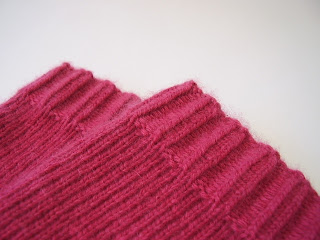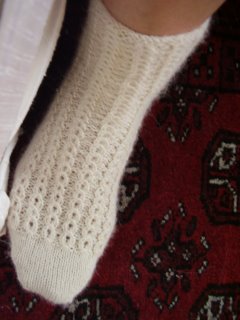Black on Black

Needles: 8mm (US11)
Gauge
3 sts and 5 rows per inch.
Front and back [make 2]
K 18 rows in St st
Next row [RS] K3, SSK, K to last 5 sts, K2tog, K3
K 18 rows
Next row K3, SSK, K to last 5 sts, K2tog, K3
K 13 rows… piece should measure approx 30cm
Shape raglan armholes
With RS facing, bind off 6 sts at beg of next 2 rows… 54 sts
Next row P
Rep last 2 rows 2 times more… 48 sts
Next row P
Next row K
Next row P
Rep last 4 rows 5 times more… 36 sts
Next row K2, K2tog, K to last 4 sts, K2togtbl, K2
Next row P… 34 sts
Bind off rem 34 sts using 9mm needles
Sleeves [make 2]
CO 30 sts
K 4 rows in St st
Next row Inc 1 st at ea end of this and every foll 10th row to 38 sts, then every foll 8th row to 42 sts
K 3 rows and then K an inc row… 44 sts
Cont straight until sleeves meas 40cm ending with a WS row
Shape raglan
Bind off 6 sts at beg of next 2 rows… 32 sts
Next row [RS] K2, K2tog, K to last 4 sts, K2togtbl, K2
Next row P
Next row K
Next row P
Next row K
Next row P
Next row K2, K2tog, K to last 4 sts, K2togtbl, K2… 20 sts
Next row P
Next row P
Next row K
Next row P
Next row K2, K2tog, K to last 4 sts, K2togtbl, K2… 18 sts
Next row P
Next row K
Bind off rem 18 sts
* I used merino wool from my stash [purchased in France a few years ago], but the garment has since been test knitted using Cascade 220.



























